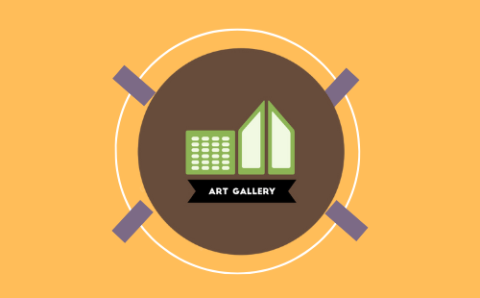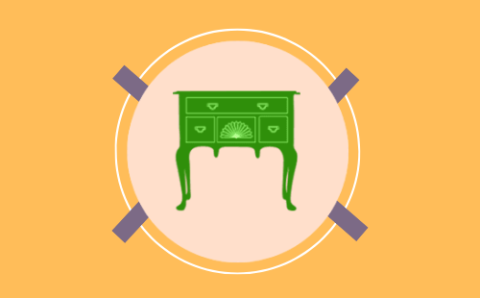Interior Designer
February 4, 2018 2022-09-29 14:49Interior Designer
Interior Designer
Interior Designer
Interior and spatial designers use their creative skills and technical knowledge to design and renovate internal spaces and structures
You may work in a range of commercial, leisure or domestic settings. The job combines the efficient and functional use of space with an understanding of aesthetics. Some designers, particularly in the domestic market, are concerned solely with the appearance, rather than the structure, of the interior.
Responsibilities
As an interior and spatial designer, you’ll need to:
- develop initial ideas and acquire key information about potential projects, discuss requirements in detail with clients (the brief) and set project schedules
- understand clients’ needs and the needs of the people using the building to develop design concepts and establish final briefs
- consider materials and costs according to budgets and negotiate project fees
- conduct feasibility studies for projects
- research and gather information and photographs relating to the project
- produce ‘sample’ or ‘mood’ boards to present to clients
- source products, such as fittings, furniture, lighting, finishes, decoration and dressing, and provide samples for clients
- prepare detailed working drawings, designs, plans, models and schemes, often using computer-aided design (CAD) software
- survey buildings
- work in a team with other designers
- supervise work at the design stage and on site
- work closely with quantity surveyors to establish costs and work schedules on larger projects, with architects and other design professionals to determine the best use of space, and with manufacturers and contractors
- identify new business and sell services to potential clients
- keep up to date with new developments in the design industry
- act as a project manager for the client throughout the construction stage, coordinating the design on site and managing the construction team – this may be required in some roles.
Salary
- Starting salaries for junior designers range from £18,000 to £23,000.
- Experienced interior designers can earn between £25,000 and £40,000.
- Salaries for senior designers can reach £45,000+, while creative/design directors can earn up to – and sometimes more than – £75,000.
Salaries vary widely and depend on your contacts, location and reputation. It’s possible to command high earnings, particularly when you’re involved with high-profile ‘prestige’ projects.
Income figures are intended as a guide only.
Working hours
Typical hours include regular extra hours but not shifts. Evening and weekend work should be expected. Since the designer’s role is often integral to a larger construction and development process, flexibility with working hours is an accepted part of the job.
Part-time work is possible, while self-employment and freelance work are common.
What to expect
- Most interior and spatial designers work in studios. Self-employed designers often work from home or a rented studio.
- Jobs are available in most parts of the UK and tend to follow concentrations of activity in the broader construction industry. Most specialist consultancies are in London and the South East.
- On-site work requires appropriate dress, which may include a hard hat and overalls.
- Working to completion dates and budgets can be stressful.
- Travel within a working day is frequent and absence from home overnight is sometimes required. Many designers visit exhibitions and trade fairs to keep up with the latest trends.
Qualifications
You’ll usually need a relevant degree, foundation degree or HND to be a professional designer. The following subjects are preferred:
- 3D design
- art and design
- interior architecture
- interior design
- spatial design.
Degrees, foundation degrees or HNDs in the following subjects are also useful:
- architecture
- fine art
- furniture design
- graphic design
- product design
- textile design.
Entry without a degree or HND is possible if you have significant experience and creative flair.
Pre-entry postgraduate qualifications aren’t needed but postgraduate level study may enhance your promotion prospects once in the job. Search for postgraduate courses in interior design. Specialist courses can enable you to move into interior/spatial design from another area of art and design. Taking a course in CAD or Photoshop may be useful.
Skills
You’ll need to have:
- a high level of technical knowledge, including CAD and model-making skills
- good drawing skills, including perspective drawing and spatial awareness
- creativity and imagination
- strong communication skills, both written and verbal, to write briefs, promote and explain ideas, and build relationships with clients
- an awareness of building and safety regulations
- knowledge of the wider construction and design industries
- project-management skills, including the ability to work under pressure and to deadlines
- attention to detail
- organisational and creative problem-solving skills
- good negotiating and management skills
- the ability to work in a team with other professionals
- a flexible attitude
- business, finance and marketing skills.
Work experience
Competition for work experience is strong so it’s important to be proactive when looking for opportunities. Many courses provide students with the opportunity to showcase their work. However, as few graduates are offered work from their degree shows, it’s vital to network and take advantage of any opportunities. Make as many contacts as possible during your studies and work experience, as they may be able to help you get your career started.
A good way of making contact with established designers is by joining the Chartered Society of Designers (CSD). There are now many websites where you can showcase your work to employers and potential clients, for example, Arts Thread.
The demand for talented interior designers is steadily increasing, although competition remains fierce. Selection is often based on a portfolio that shows your design skills, as well as your capacity to get involved in a range of different projects. It’s unusual for employers to offer traineeships, and speculative approaches are strongly advised.
Find out more about the different kinds of work experience and internships that are available.
Employers
Interior and spatial designers usually work for architects or design consultancies (interior or multidisciplinary) in private practice, or for commercial organisations with in-house design departments.
Many designers work on a freelance basis or are self-employed, although it’s uncommon to set up your own business without first gaining substantial experience and having built up a reputation and a list of contacts.
Clients may include:
- commercial and construction companies
- companies in the hotel and leisure industries
- local government bodies
- retailers
- theatre, TV and film companies.
There are increasing opportunities to work for domestic customers in the expanding field of house interiors. This can include the restoration or maintenance of historically important buildings as part of a team made up of conservation officers, architects, designers and other professionals.
Look for job vacancies at:
Professional development
Large consultancies offer on-the-job training and some provide courses on subjects such as negotiation, marketing (particularly branding), website creation, CAD and software packages such as Photoshop, Flash and Illustrator.
Continuing professional development (CPD) courses, including training seminars and workshops, are accessible to members of the Chartered Society of Designers (CSD). Completion of a certain quota of CPD is mandatory for chartered members and encouraged for other members. CPD enables you to network and share ideas and update your personal and professional skills.
Professional practice seminars on a range of subjects, including project management and managing contracts, are available throughout the year to members of the British Institute of Interior Design (BIID).
Further study provides the opportunity to experiment, diversify or obtain specialist knowledge in order to progress in your career. Masters and PhDs are available in specialised areas of interior design and related subjects. Further education (FE), art and design or private colleges also run short courses. It’s important to research courses thoroughly to ensure they meet your requirements. Useful subjects to study include:
- computer-aided design (CAD)
- green energy/eco topics
- lighting or building regulations
- Photoshop.
Career prospects
Typically, interior designers spend the first five to ten years of their career developing and building on existing skills and knowledge, as well as gaining further experience. Beyond that, there is no definite or structured career path, and the extent and speed of career progression depends on the setting and your performance, aptitude and dedication.
Newly qualified junior designers tend to work alongside more experienced colleagues. You’ll typically be given responsibility for parts of a project and can also assist with gathering information and putting together ‘mood’ or ‘sample’ boards for presentations to clients. This can lead to increased responsibility, depending on your performance.
Specialisations and further professional qualifications at Masters or PhD level can enhance your chances of promotion, while moving from a larger consultancy to a smaller one can mean more responsibility.
It’s important to build up a portfolio as you progress in your career. This helps both in terms of promotion within a company or consultancy, and in attracting new clients if you’re self-employed. The majority of established interior and spatial designers showcase their work online to potential clients. Freelance work for consultancies, practices or individual clients is possible with experience, as is setting up your own business or becoming a partner in a consultancy.
June 2022







